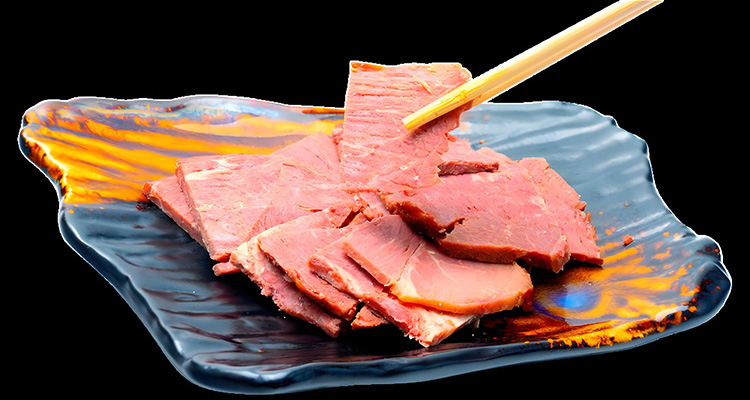Pingyao Beef Recipe: Timeless Shanxi Flavor
Strolling through Pingyao Ancient City — a UNESCO World Heritage site — you’ll find more than historic walls and gray-tiled lanes. A tempting aroma drifts from alleyways: the scent of Pingyao beef. With nearly five centuries of history, Pingyao beef is more than a dish; it’s an edible relic of Shanxi merchants’ culture. Follow this savory trail to learn the story, taste, and traditions behind this red-hued specialty.
1.Origin and History: The Energy Reserve of Shanxi Merchants
Pingyao beef grew up alongside Pingyao’s rise as the financial hub and home of the Shanxi merchant clans. Its roots reach back to the mid-Ming dynasty—almost 500 years ago—when caravans traveling long routes needed food that could be preserved, carried easily, and provide calories. Local people harnessed quality regional beef and developed a curing and cooking technique that produced tender, richly flavored meat with a glossy red color. Once a staple for merchants on trade routes, each slice of Pingyao beef carries echoes of the city’s commercial legacy.
2.Cultural Meaning: Intangible Heritage and Emotional Bond
In Pingyao, the beef transcends mere food and becomes a social and cultural symbol. It appears at weddings, festivals, and major family gatherings as a prized dish signifying prosperity and good fortune. The traditional production method of Pingyao beef has earned recognition as a national intangible cultural heritage, cementing its status. For those from Pingyao living afar, the familiar salty-savory taste evokes deep homesickness. For visitors, tasting Pingyao beef is a direct encounter with living culinary history and an authentic way to experience Shanxi cuisine and merchant culture.
3.Ingredients and Craft: A Taste Forged by Time
Pingyao beef’s distinctive quality comes from the combination of local ingredients, climate, and craftsmanship.
- Ingredients: The best Pingyao beef uses local yellow cattle raised in southern Shanxi. These animals graze on mountain spring water and wild grasses, producing tight-grained muscles rich in natural flavor.
- Process: The secret is the traditional ‘‘marinate, boil, and steam’’ technique—often summarized as “one marinate, two boil, three rest.”
- Marinating (deep seasoning): Whole cuts are dry-salted with local well-salt and a proprietary spice blend—usually including Sichuan pepper, clove, cinnamon, and dozens of other aromatic spices—for up to two weeks, allowing the flavors to penetrate.
- Boiling (controlled heat): The cured meat is simmered in a generational stock. The meat is first brought to a boil to remove impurities, then gently simmered for hours over low heat. That aged stock is the soul of the dish, passed down and enriched over time.
- Resting (residual warmth): After cooking, the pot is taken off the fire and the beef is left to rest in the warm broth overnight. This slow cooling lets the meat reabsorb the liquor and tenderize while holding its shape.

4.Flavor and Texture: A Harmonious Balance
The finished Pingyao beef is a visual and sensory delight: a translucent, reddish sheen, clearly defined muscle fibers, and an inviting fragrance of meat and subtle spices. Its texture is firm but never dry—chewy yet melting—offering a balanced interplay of savory and mild umami. Unlike some Western cured hams or overly soft braises, Pingyao beef finds a pleasing midpoint between resilience and silkiness, with a long, satisfying finish.
5.How to Eat Pingyao Beef: Versatile and Crowd-Pleasing
- Pingyao beef adapts to many preparations and occasions:
- Cold sliced (classic): Thin slices served cold highlight the original seasoning—perfect as a starter or an accompaniment to local spirits.
- Stir-fried or tossed cold: Sliced or shredded beef can be quickly wok-tossed with peppers and herbs or dressed cold with vinegar, garlic, and sesame oil for refreshing flavors.
- Wrapped with local noodles: Locals enjoy beef tucked into traditional Pingyao breads or hand-made noodles, where the rustic dough complements the beef’s richness.
- As a filling: Minced Pingyao beef makes excellent dumpling, bun, or pastry filling.

6.Practical Tips for Visitors: Buy and Taste Like a Local
- Where to eat: For the most authentic experience, order Pingyao beef at time-honored inns or reputable restaurants inside the ancient city. Many operate in historic courtyard settings, enhancing the atmosphere.
- Buying souvenirs: Purchase from certified shops displaying the Pingyao geographic indication on packaging. Vacuum-sealed packs travel well and keep for extended periods.
- Best season and pairings: Pingyao beef is year-round, but it shines with warm Shanxi fenjiu (sorghum spirit) in cooler months. In summer, try lighter cold preparations.
- Tip: Because the beef is already well-seasoned, reduce additional salt or soy when cooking or dressing it.
7.Simple Home Version: A Practical Try-at-Home Recipe
- You can approximate Pingyao-style beef at home with a simplified approach:
- Choose a quality beef shank and clean it.
- Rub with toasted Sichuan pepper and salt (roughly 1:5 pepper-to-salt ratio) and refrigerate for 2–3 days.
- Rinse surface salt, add to a pot with water, scallion, ginger, cooking wine, 2–3 star anise, and a small cinnamon piece.
- Bring to a boil, then simmer 1.5–2 hours until tender.
- Let cool naturally in the broth for several hours or overnight to absorb flavor. The result won’t match the original aged stock, but it captures much of the character.

Conclusion and Call to Action:
Pingyao beef is a biteable piece of history and a taste of Shanxi’s merchant legacy. Rich in flavor and cultural meaning, it’s a must-try when you visit Pingyao Ancient City. Add Pingyao beef to your travel list—taste history, buy a souvenir pack, and bring home a flavor that tells a story


